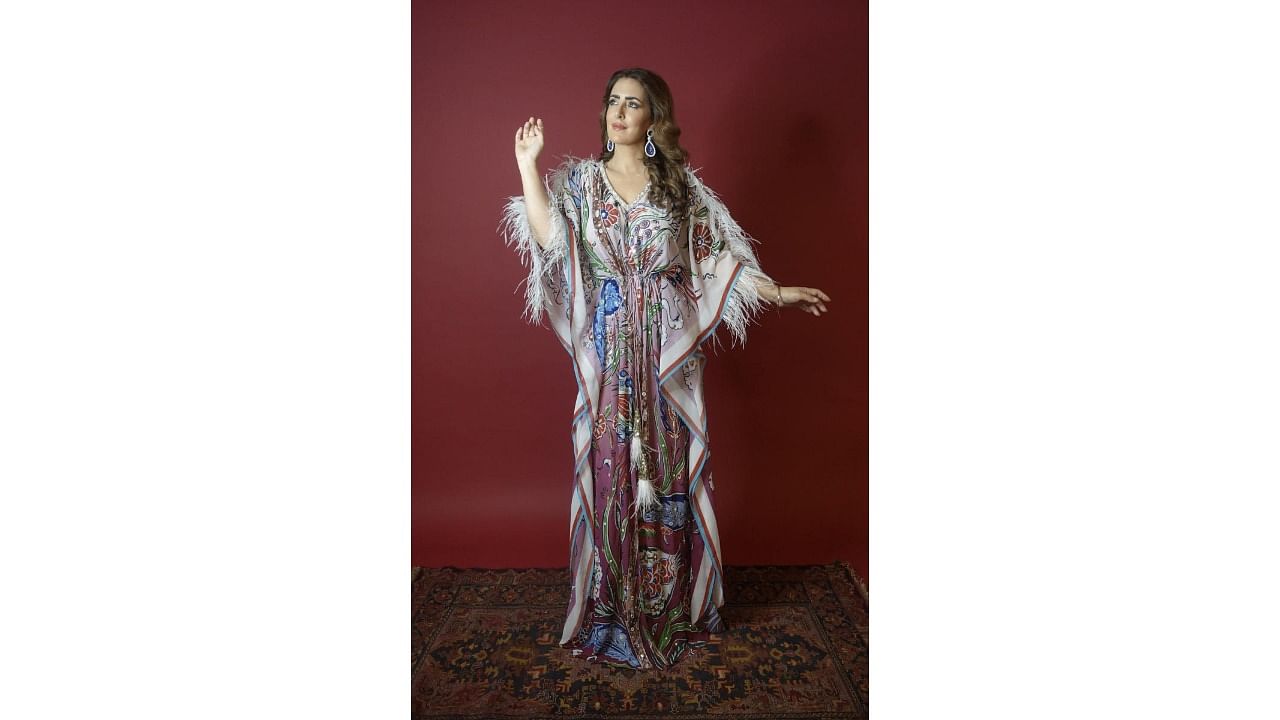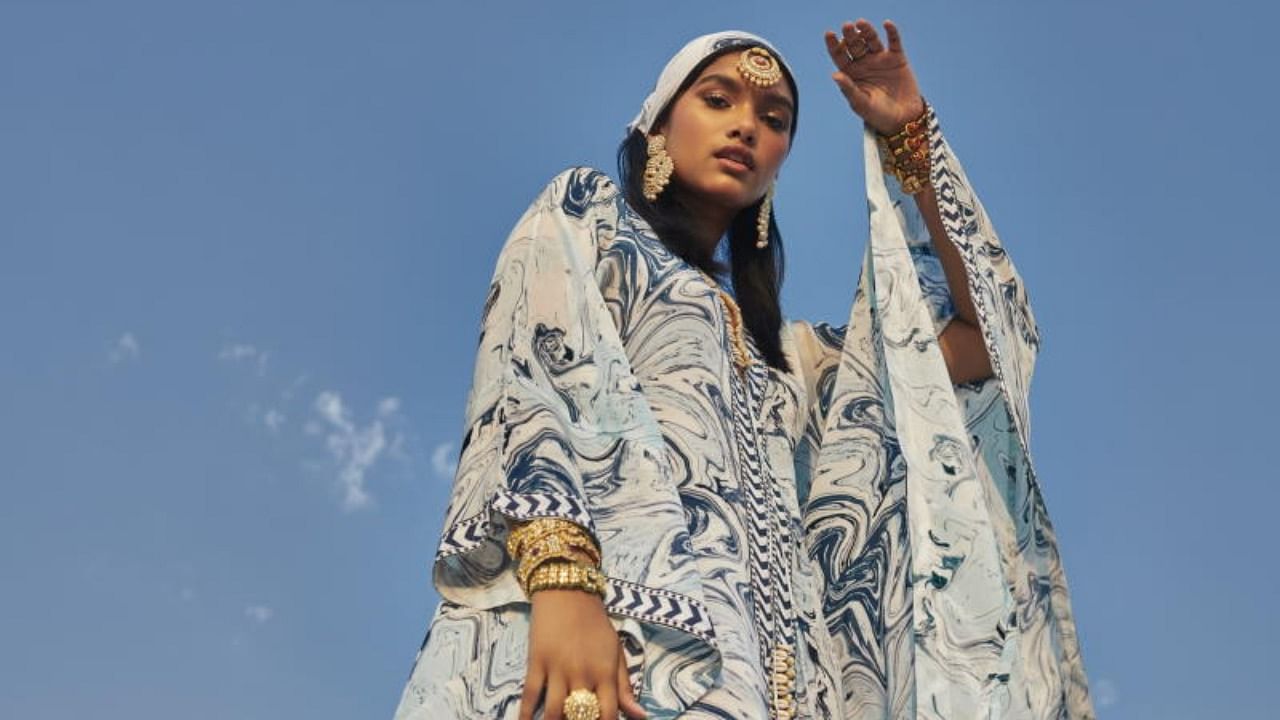
From a loose slip-on, to a shape-defining modish silhouette, the kaftan has recalibrated into swish formats.
A far cry from its 14th-century Ottoman version, these are available now in micro-minis, Oriental cuts with embellishments and in eye-popping colours.
In its form-forgiving avatar, it is a championed garment. In its curve accentuating darts, it composes resort wear with a swish. The voluminous kaftan has gained prominence, especially in the wake of the pandemic when flattering and functional fashion has emerged as the loud anthem.
Stylish swish
Fashion designer Pria Kataaria Puri, who designs luxury kaftans, began designing kaftans 12 years ago and has had 10-15 in each collection showcased to date.
“What works is its sheer versatility. You can dress kaftans up and dress them down, keeping with the occasion. It is a perfect fit for a range of sizes — XS to XXXL. While a pair of jeans, sari blouses and dresses might refuse to accommodate one’s changed body size, a kaftan with its easy fit, becomes a go-to garment during the lockdowns,” she says.
Roomy and fuss-free, kaftans are low maintenance and available in prints and solid colours, ikat and bandhani formats, and glam and holiday get-ups.
“It is easy to wear and carry while travelling, and is fashionable for all age groups. From a beachwear pick to a glamorous party outing to a pre-wedding function, it is making waves. A kaftan’s design is flattering for pregnant women and new mothers too,” says fashion designer Maheka Mirpuri. Depending on the length, you can slip on a kaftan as a dress or it can be teamed with tights.
Version up
While the plain parallel robe cut of the kaftan has undergone a radical revision, there are fluttering cuts in kimono sleeves, single shoulder variations and shooting lengths, says designer Saaksha Bhat of fashion label Saaksha & Kinni.
“Cotton silks and chiffons form our kaftan repertoire. We feel they are light enough to moonlight as a beach coverup but also as a cocktail garment. They are comfortable fabrics that lend themselves to a lazy day by the pool or an evening that involves dancing the night away. Our silhouettes range from one-shoulder to two-shoulder ensembles. Many of our kaftans carry our signature hand-embroidered mirror work, oxidised stones, thread work and metals. We also hand micropleated the majority of our kaftans to add that extra element of texture and movement.”
Forget the sleepwear that we saw our mothers and grandmothers wearing, the garment has evolved into a defining signature fashion staple, growing beyond its cotton cornucopia.
Says Pria, “High quality, superior fabrics in silk crepes, silk chiffons, silk lycra, chantilly lace, and georgette, fluidly move with your curves. The silhouette has been darting through K-style lehengas, saris, blouses and dresses too. People in the Middle East, and in colder climes, possess kaftans in wool, velvet and cashmere too. We bring in fine detailing in the form of feathers, lace, semi-precious stones, tassels and wide belts to rev up the luxe quotient further.”
Colour call
Designer Arpita Mehta’s latest collection includes kaftans in brick reds, mustard yellows, cream rug prints, teal, cream and black. “From bandhani prints, florals and geometrics, in suede trims and mirror detailing in eclectic chic, this collection celebrates it all, with coral and turquoise beads,” she says.
For all occasions
There is a kaftan for every occasion, believe designers. In sorbet hues, Maheka has created kaftans in handpainted silks for beach weddings and resort wear. From tie and dye, pop colours, asymmetric cuts, and low necklines, to billowing sleeves and chunky belts, kaftans can be seen in many designs now.
“A spin-off on the belt is the harness with a pouch,” she shares about a waist emphasiser design she created. “It is very modern and adventurous as it cinches the waist and shapes it out. Nothing succeeds like kaftans in metallic colours for evening wear, coupled with a bold belt,” she adds.
Wallet factor
Everyday wear kaftans (in cotton) start from Rs 500. Designer kaftans, in expensive fabrics and with embellishments, starts from Rs 8,000.
Looking back
The kaftans, rooted in ancient Persia, date back to 600 BC. By the 13th century, the popular garment became popular in Eastern Europe and Russia. The kaftans were shaped in rich Ottoman satins, velvets and silks, with metallic threads, and worn by courtiers to indicate status. In Western culture, the kaftan cut gained prominence in the global fashion scenario in the 20th century. French designer Christian Dior styled the kaftan to create full-length evening coats for women. This led to its advent into haute couture.
Suitability
Silk linen, georgette, and silk are the favoured luxe fabrics for dressy kaftans as they accentuate curves and move with one’s body.
Cashmere, and different types of wool, are an uncommon pick (though functional in cold climates) as they are thick, heavy and do not flatter curves.
The Kashmiri phiran is a variation of the kaftan cut.
